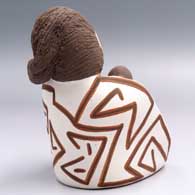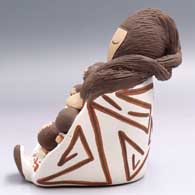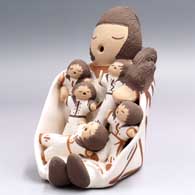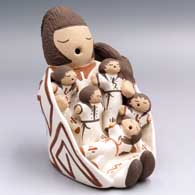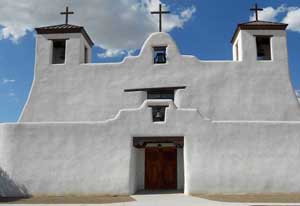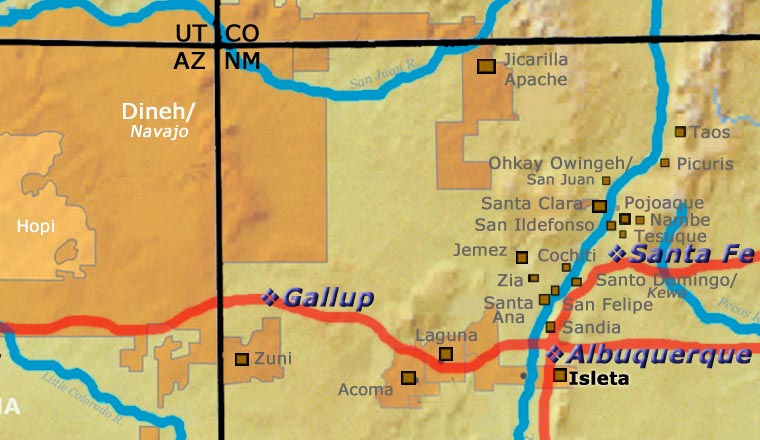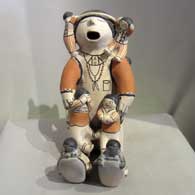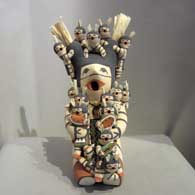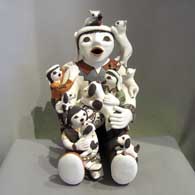
Chris Teller, Isleta, Grandmother storyteller figure with a twisted braid and wearing a manta with 5 children
Chris Teller
Isleta
$ 575
lkle2d262
Grandmother storyteller figure with a twisted braid and wearing a manta with 5 children
5.5 in L by 3.75 in W by 5.5 in H
Condition: Very good
Signature: C. Teller Isleta, N.M.
Sale Price: $475
Isleta
$ 575
lkle2d262
Grandmother storyteller figure with a twisted braid and wearing a manta with 5 children
5.5 in L by 3.75 in W by 5.5 in H
Condition: Very good
Signature: C. Teller Isleta, N.M.
Sale Price: $475
100 West San Francisco Street, Santa Fe, New Mexico 87501
(505) 986-1234 - www.andreafisherpottery.com - All Rights Reserved
(505) 986-1234 - www.andreafisherpottery.com - All Rights Reserved
Teller Family Tree
Disclaimer: This "family tree" is a best effort on our part to determine who the potters are in this family and arrange them in a generational order. The general information available is questionable so we have tried to show each of these diagrams to living members of each family to get their input and approval, too. This diagram is subject to change should we get better info.
- Marcellina Jojola (c. 1860s-)
- Emily Lente Carpio (c. 1880s-)
- Felecita Jojola (c. 1900s-) & Rudy Jojola
- Stella Teller (1929-) and Louis Teller
- Chris Teller Lucero (1956-)
- Marie (Robin) Teller Velardez (1954-) and Ray Velardez
- Lesley Teller Velardez (1973-)
- Mona Blythe Teller (1960-)
- Christopher Teller
- Nicol Teller Blythe (1978-)
- Lynette Teller (1963-)
- Stella Teller (1929-) and Louis Teller
- Felecita Jojola (c. 1900s-) & Rudy Jojola
Some of the above info is drawn from Southern Pueblo Pottery, 2000 Artist Biographies, by Gregory Schaaf, © 2002, Center for Indigenous Arts & Studies
Other info is derived from personal contacts with family members and through interminable searches of the Internet and cross-examination of the data found.

